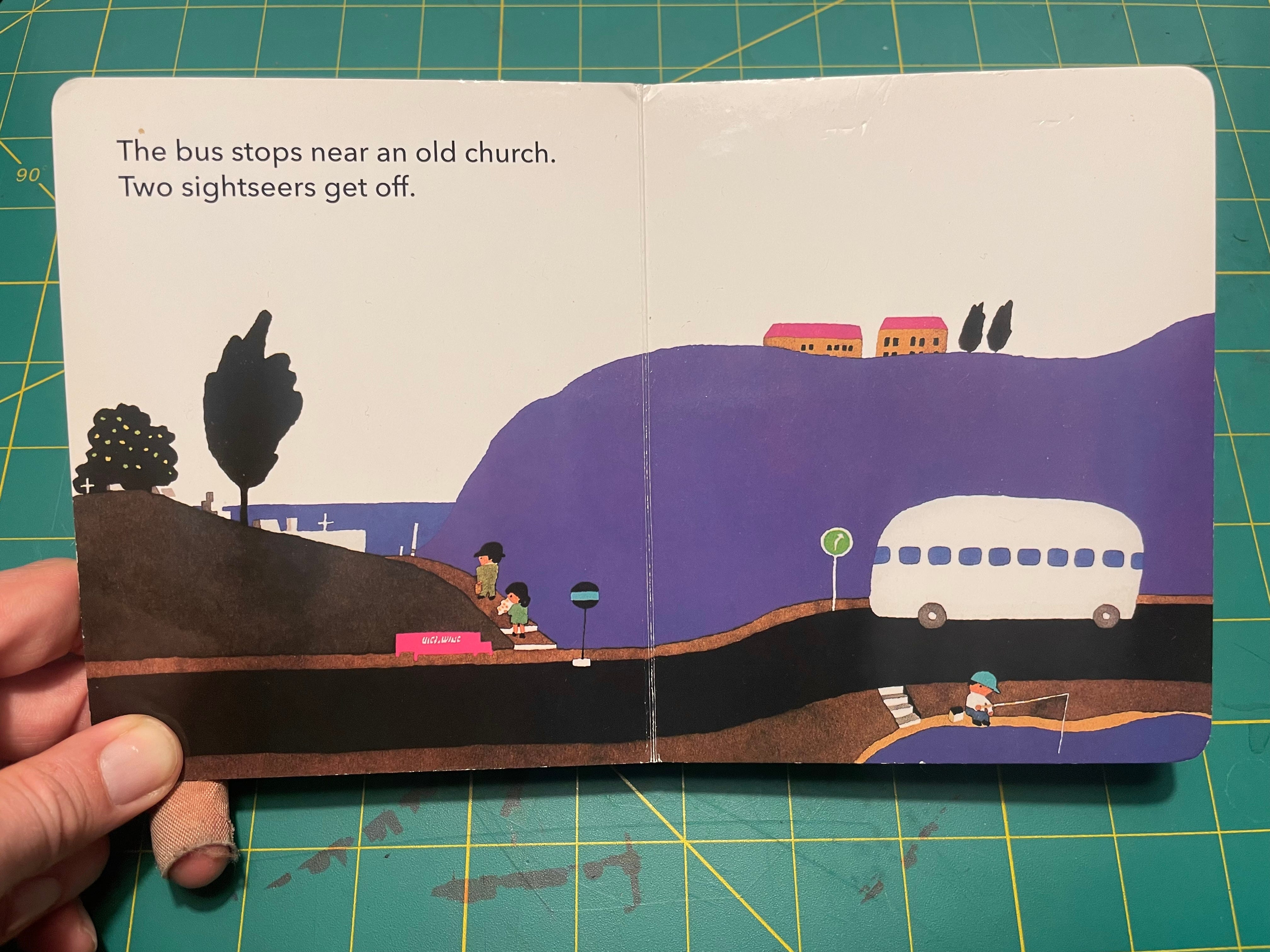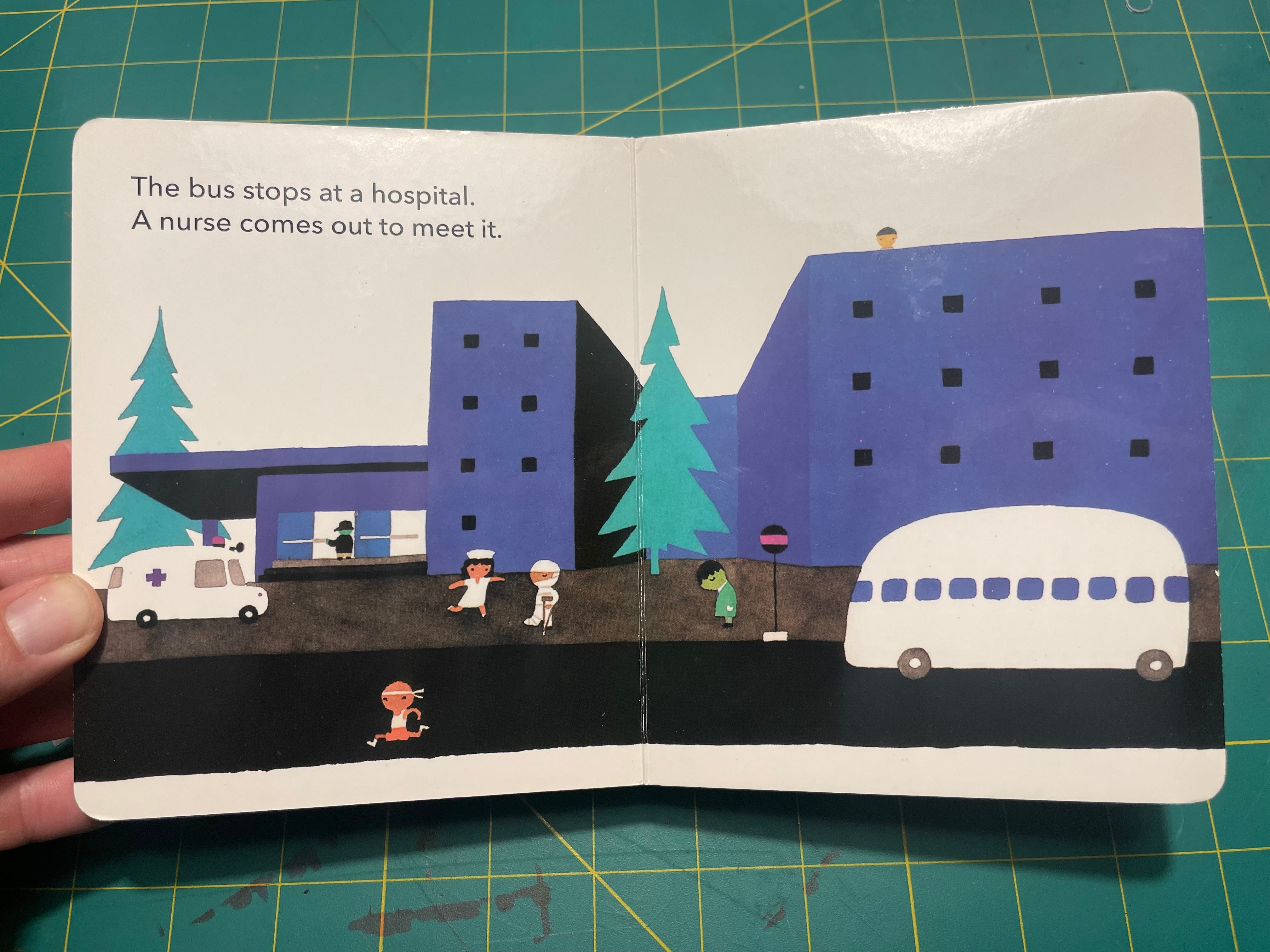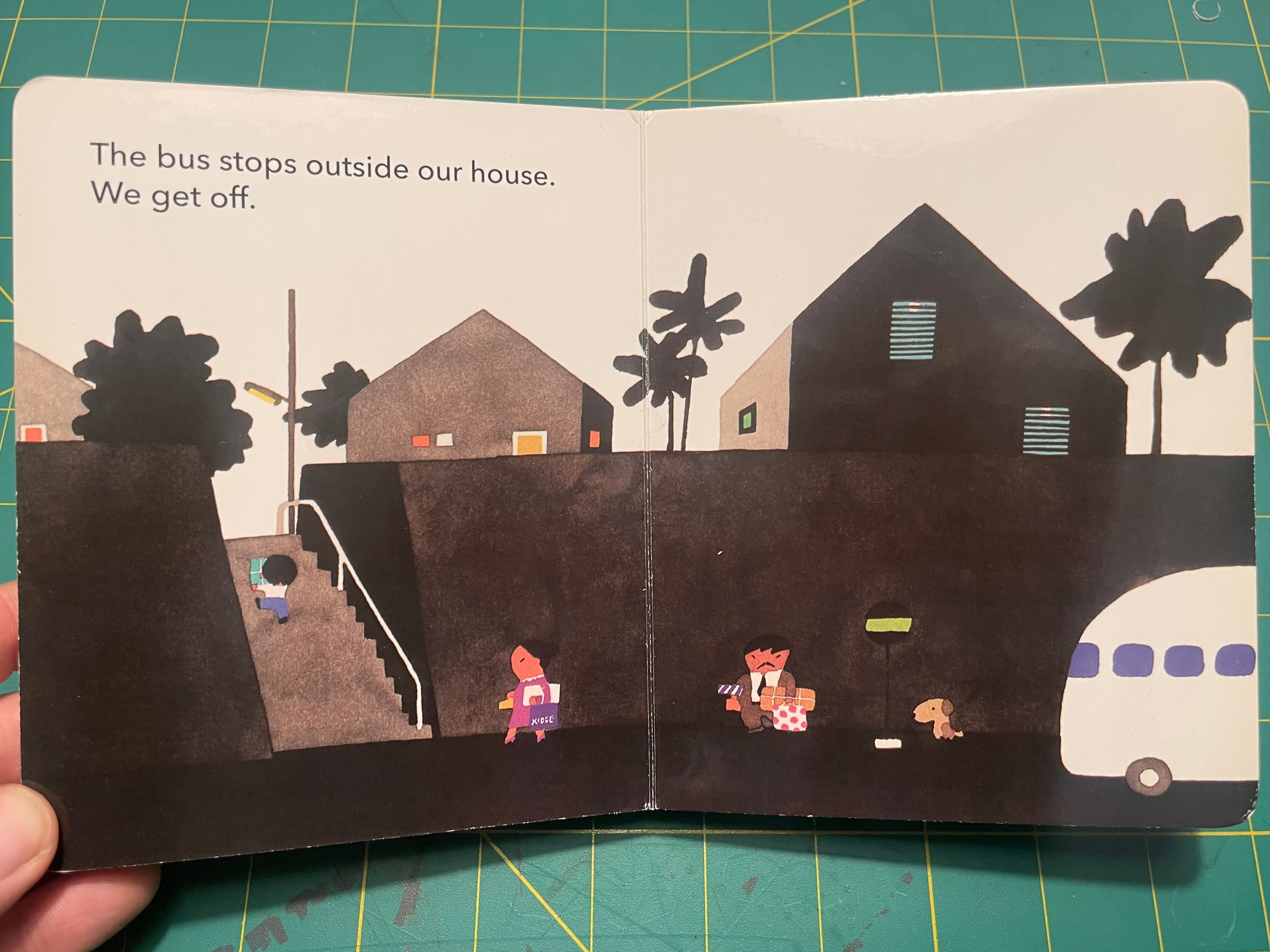Our recent conversation about Jon’s new board books inspired us to recommend some other board books we love. These are those board books.
Bus Stops, by Taro Gomi
One of the great things about board books is how their brevity lends itself to keeping a small idea small. “Bus Stops” is exactly what it claims to be: a series of bus stops. The absence of a conflict or a problem is a statement of its own in a lot of Gomi’s books. Following a bus through a normal, uncomplicated day and letting that stand as a complete work seems almost punk rock when it’s executed this carefully. But you can’t get TOO quiet, you’ve got babies to engage after all. The challenge then, for the person making the book, is to find opportunity, variation, and hopefully some kind of ending, even if you didn’t set up anything that feels like it needs solving. (Though for this illustrator, moving through what I *think* is my favorite set of Gomi illustrations is reason enough).
Even though the book is calm and meditative, Gomi doesn’t bore the reader for even one page. Every spread has some kind of unexpected detail in it. Either in the text (“The bus stops near an old church. Two sightseers get off.”) or in the illustrations — on the page where the bus stops at the hospital, a bunch of sick people get off but the text only says, “A nurse comes out to meet it.” Also, note the jerk jogging by and flaunting his health, and the guy on the roof for some reason.
It also, refreshingly, doesn’t follow any discernible pattern. Gomi doesn’t uniformly increase or decrease the number of people getting on or off the bus as the book goes along, and he breaks his rhythm just as you might be getting over it (“The bus stops at a junkyard. No one gets off.”)
Worth noting about the junkyard spread, too, is that the visual fun Gomi is having by assigning himself the problem of framing the white bus against objects behind it, a clever way to make you look forward to how he’s going to do it page after page, is pushed to the limit here — just a little to the right and the bus would start to merge with the sky. *Swoon*. Finally, the whole book kind of ends twice — first with the author and his family getting off the bus (a nice surprise because we didn’t even know “we” were ON the bus until now), which is where some people might think to stop.
But it keeps going, and, two pages later, after a page that has the bus driver himself getting off, it simply shows an empty bus stop on a half-spread and the text reads "Goodnight bus.” Perfect. —JON










